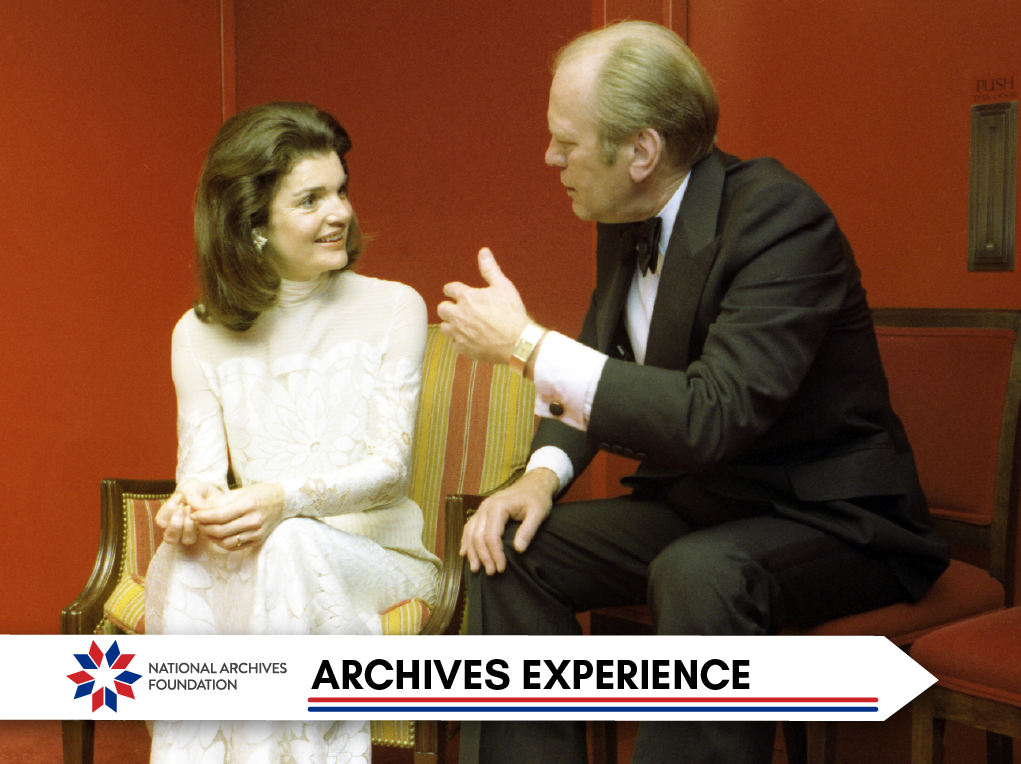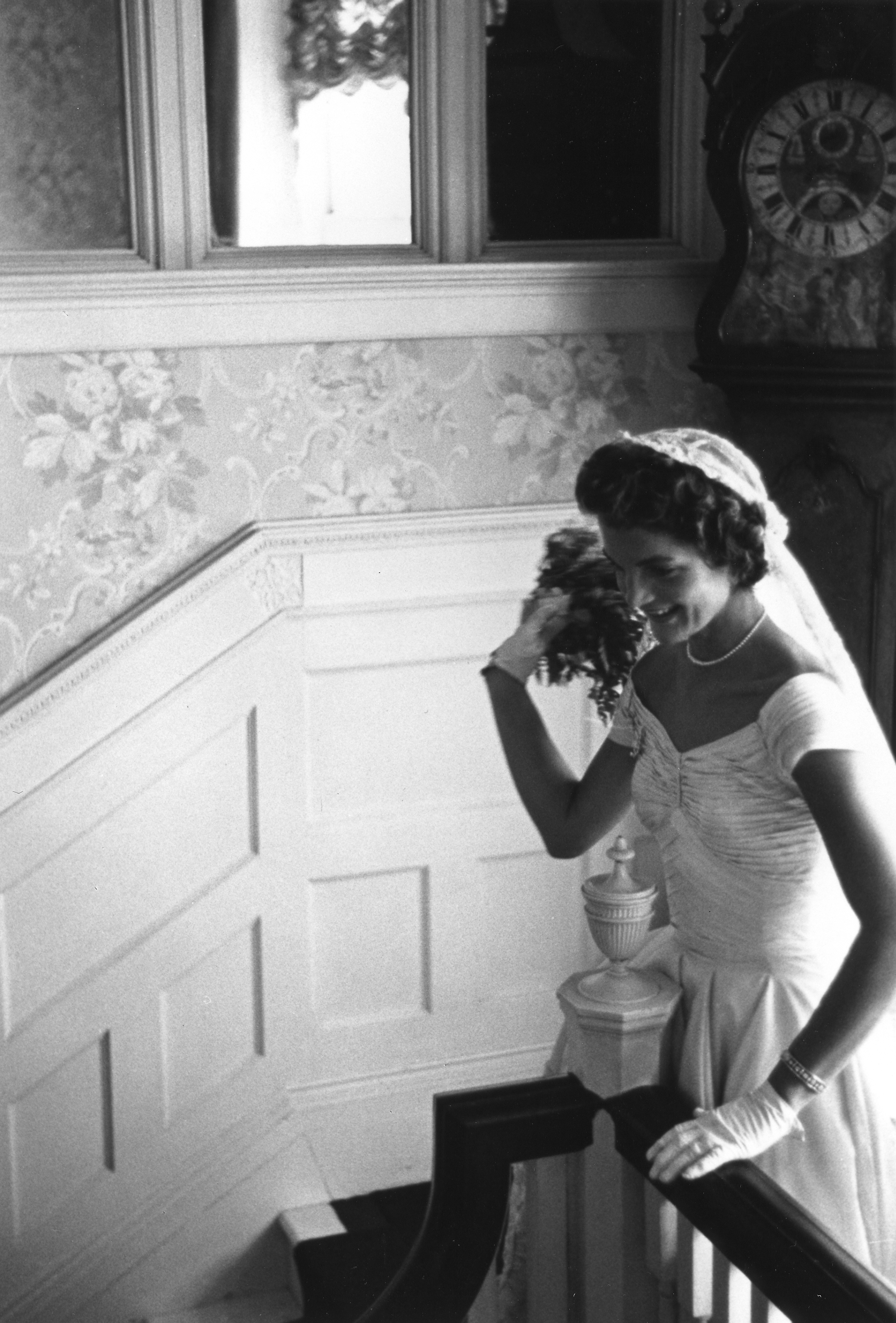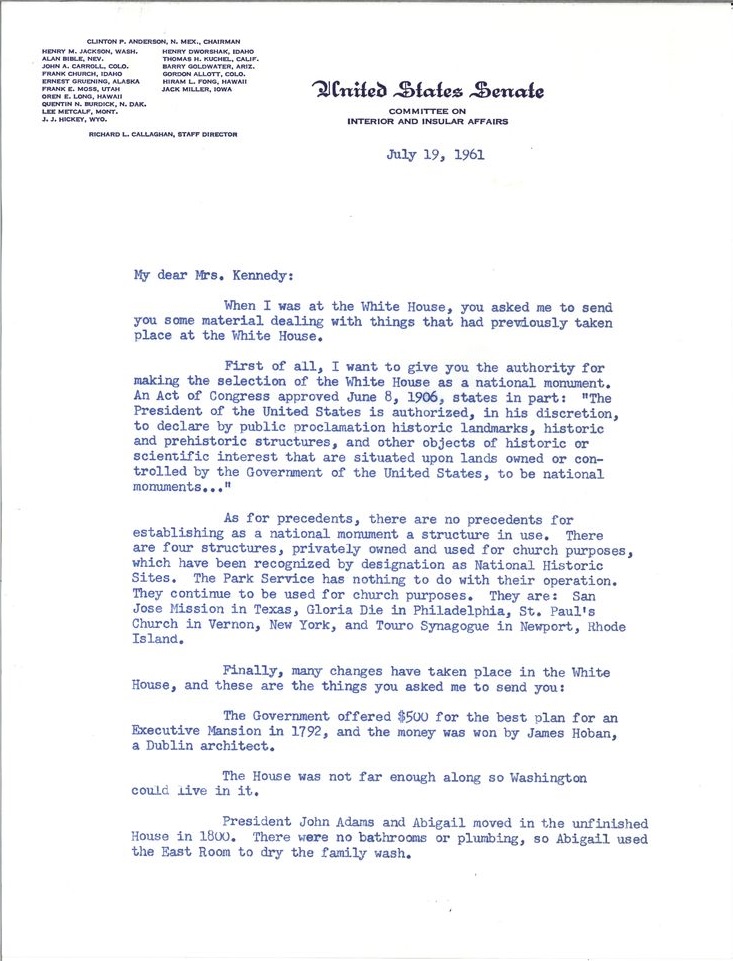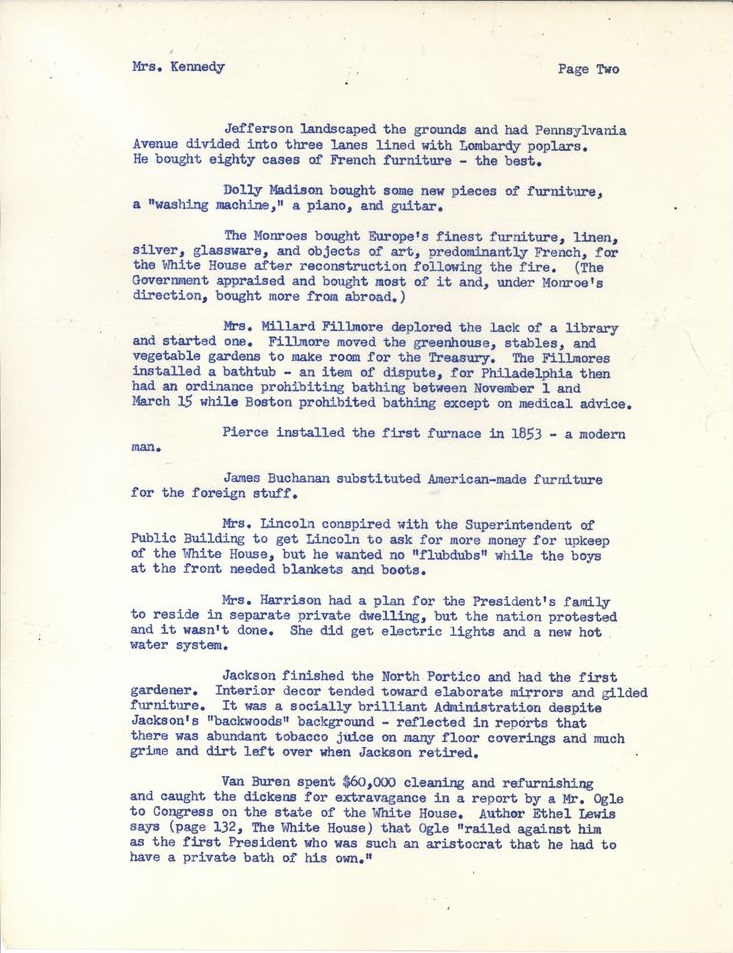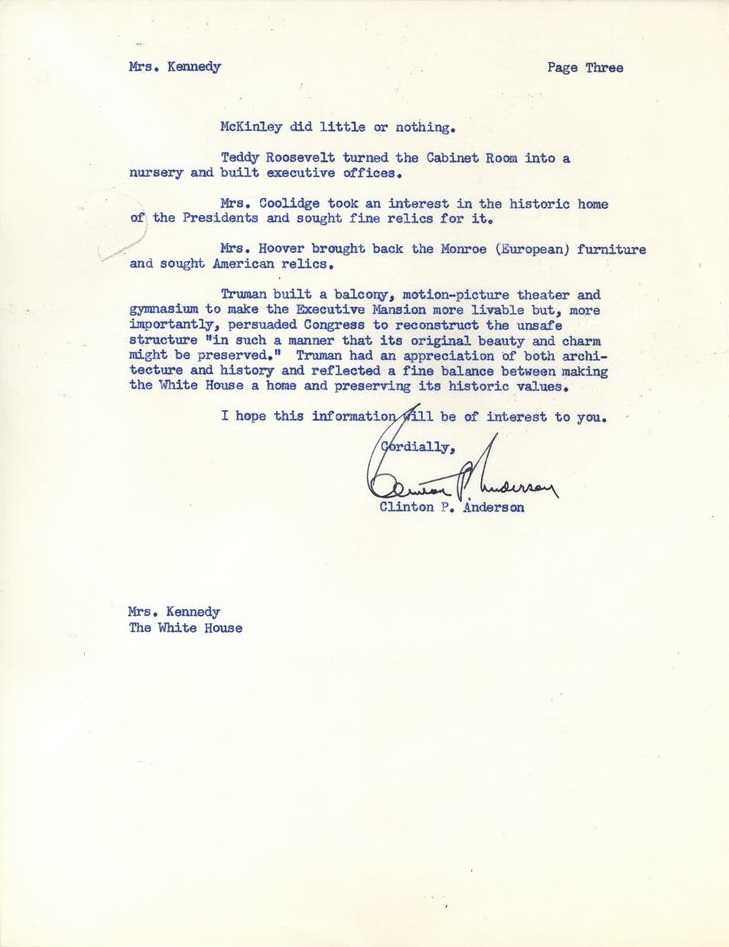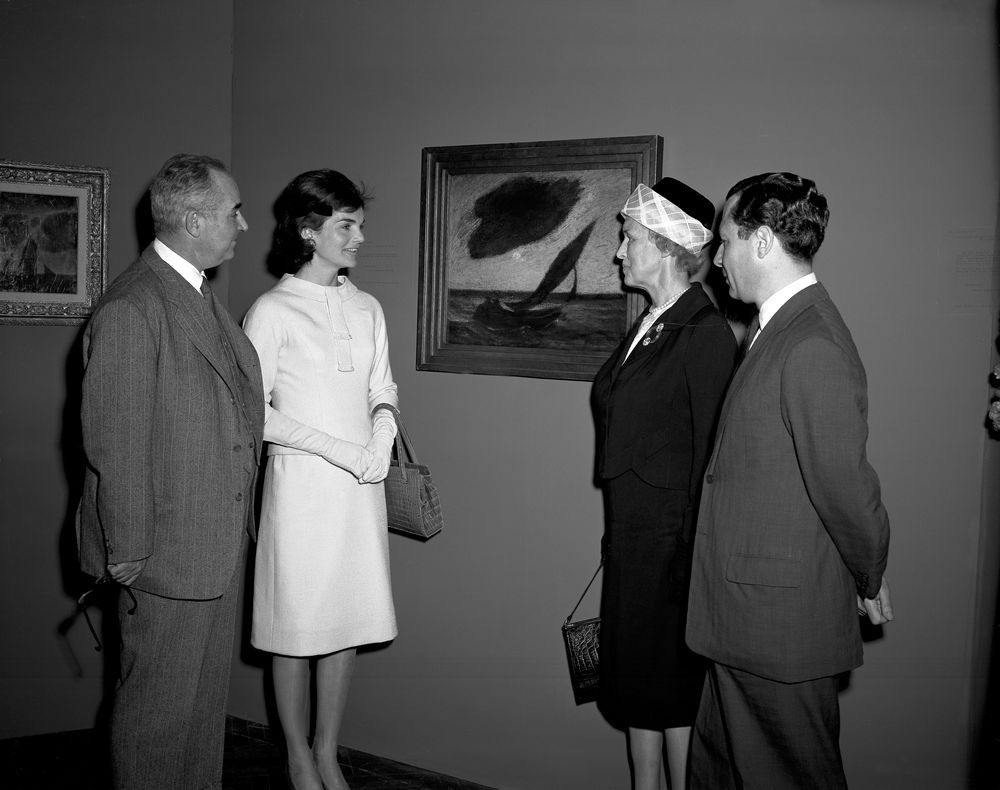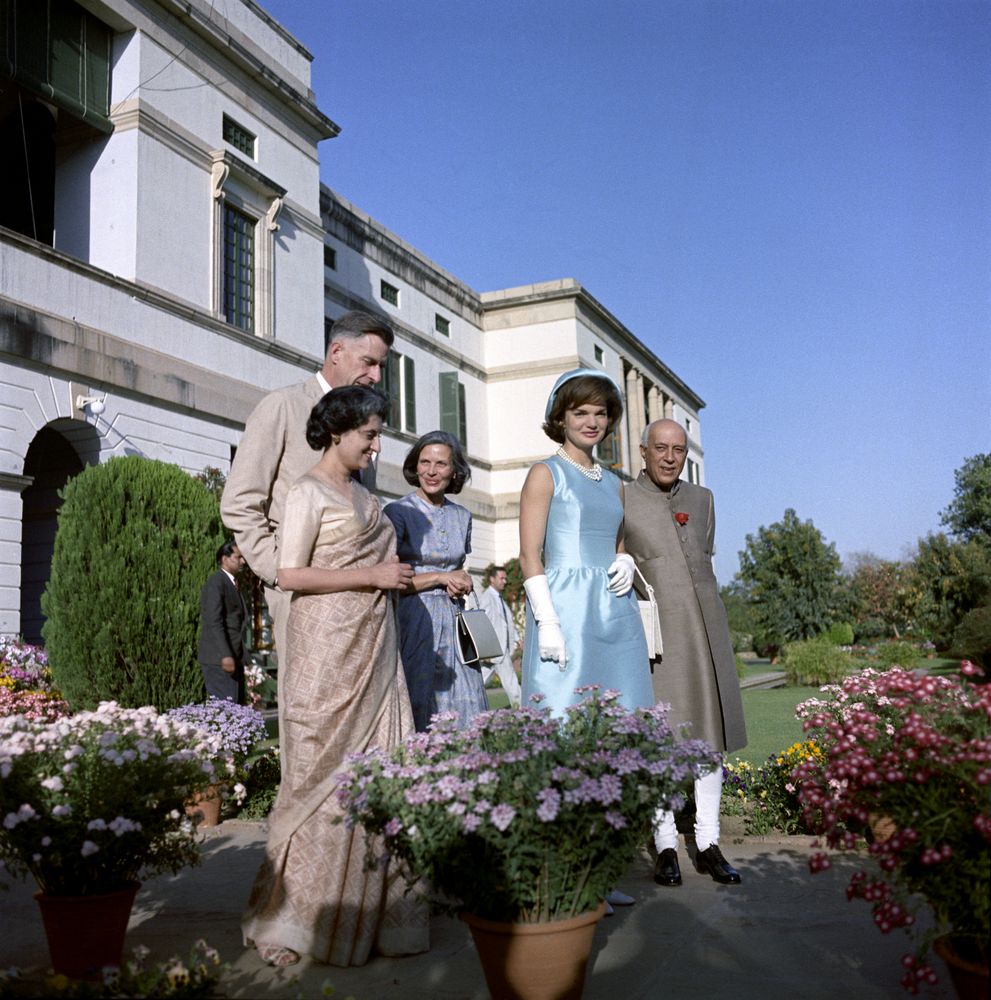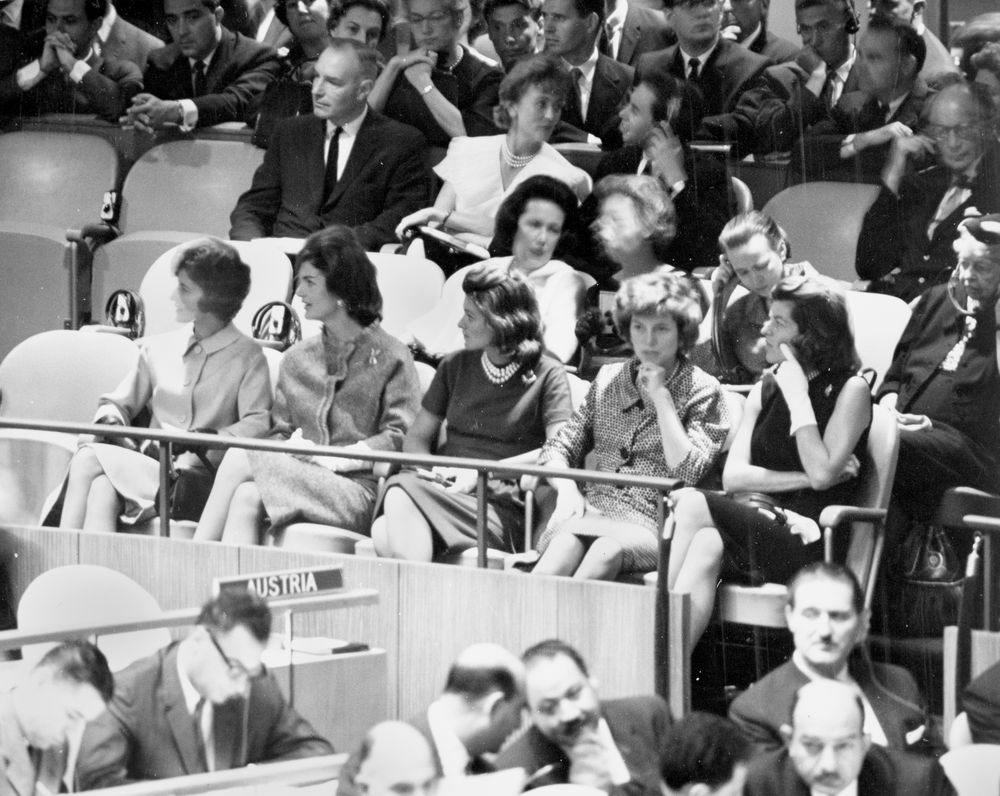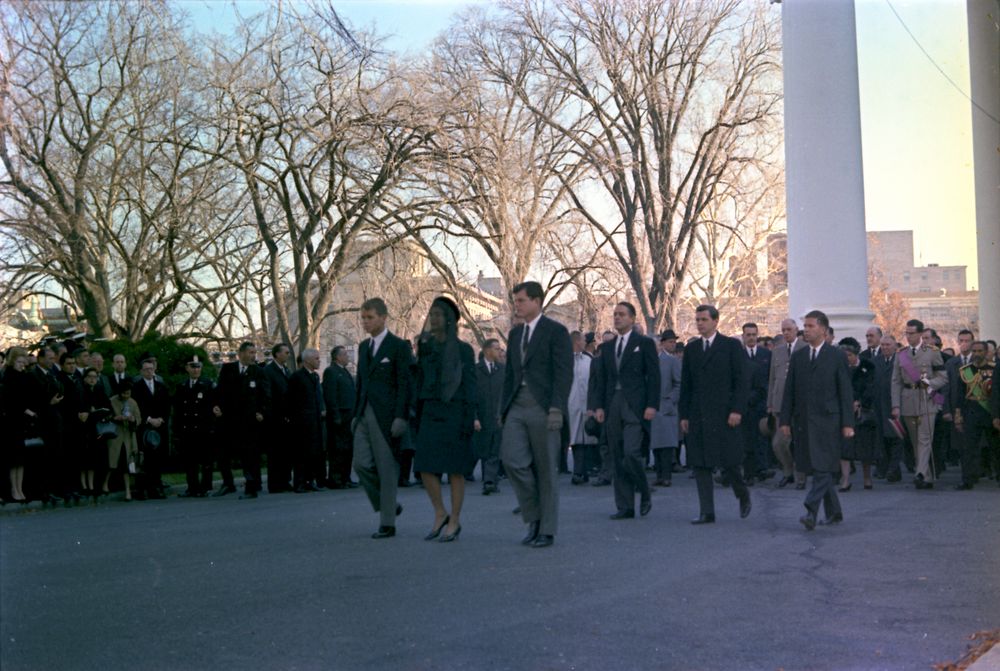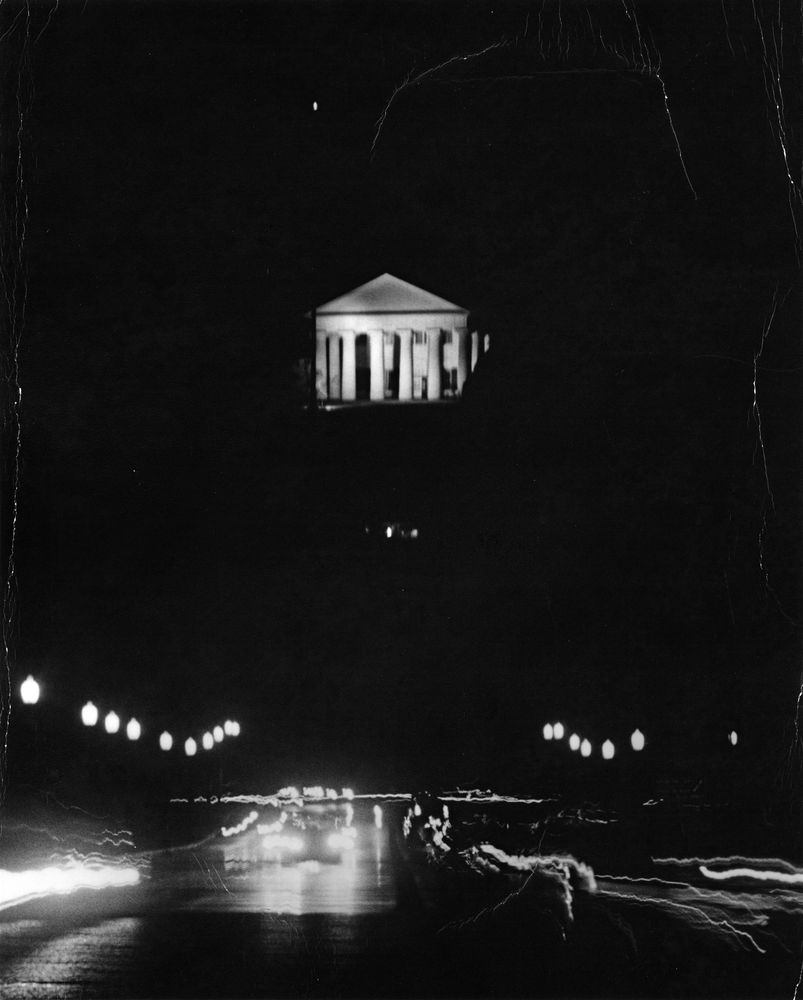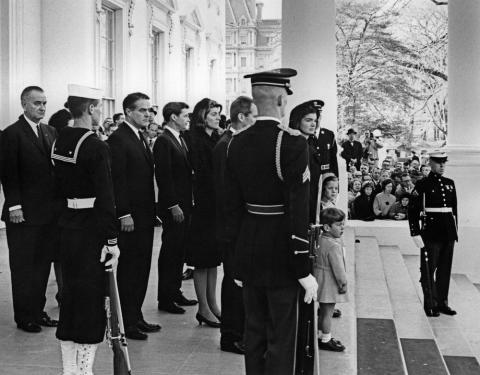Archives Experience Newsletter - July 25, 2023
Jackie
The First Lady’s job is often thankless. It comes with no detailed description, no paycheck, and a guaranteed endless barrage of criticism, no matter what the person filling the position does. The First Lady has to choose her causes and pick her battles, and she is expected to be glamorous, gracious, and endlessly patient, even when she’d probably much rather put her feet up and read a good book, far from the prying eyes of the public.
In celebration of her birthday, we’re highlighting one of the many First Ladies who overcame the challenges of the role and made a lasting impact on both individual lives and the American public. Plus, as lovers of historic preservation, we at the Foundation have a lot in common with her, too!
This week, we pay tribute to the one and only Jacqueline Kennedy…
In this issue
History Snack
Jacqueline Bouvier

Jacqueline Bouvier in Riding Clothes
Source: JFK Library
When John Fitzgerald Kennedy was elected President on November 8, 1960, his wife, Jacqueline Bouvier Kennedy, was rather a different kettle of fish than many of the women who had served as First Lady. Raised along with her sister Lee by her mother Janet Lee Bouvier and her stepfather Hugh D. Auchincloss, Jr., a wealthy lawyer, on Hammersmith Farm in Newport, Rhode Island, and at their Merrywood estate in Virginia, Jacqueline attended Vassar College and studied at the Sorbonne in Paris during her junior year. She used that opportunity to perfect her French, but over time, she also became fluent in Italian and Spanish. Returning home, she completed her education at George Washington University in Washington, DC. All her life, she loved horses and equestrian sports and the fine arts, especially dance and painting.
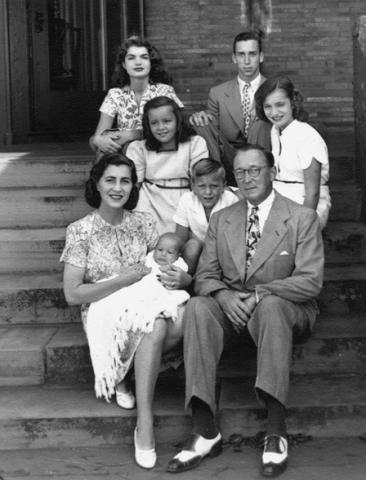
Jackie Kennedy (top left) and family
Source: JFK Library
In 1941, Jackie, her mother, and her sister toured the White House, an experience that made a lasting impression on her. There was no brochure about the White House for those who toured the venerable building, and Jackie was stunned to see how few antique furnishings were displayed in it. The experience greatly informed her work when she came to live in the White House as First Lady. In 1951, after she graduated from George Washington University, she began working as a reporter-photographer for the Washington Times-Herald. She met John Kennedy in 1952 at a dinner party in Washington, and he proposed to her in 1953, after he had been elected to the U.S. Senate.
Jacqueline Kennedy
John and Jackie married that fall in Newport, Rhode Island, in what some people described as the wedding of the season, and they took up residence in McLean, Virginia. The first years of their marriage were difficult—John underwent spinal surgery for a war injury, a treatment that nearly killed him, and Jacqueline suffered a miscarriage and a stillbirth. They subsequently sold their Virginia home to John’s brother Robert and moved to Georgetown.
Source: JFK Library
On November 27, 1957, Jacqueline gave birth to their daughter Caroline Bouvier Kennedy. John was in the middle of campaigning for reelection to the Senate, and Jackie campaigned with him when she could. Although she was rather shy and retiring by nature, the crowds who came to his campaign events found her immensely attractive, and she won her husband’s considerable gratitude and approval. The renowned historian Arthur M. Schlesinger spoke with Jackie for the first time in July 1959 at the Kennedy Compound in Hyannis Port and stated she had “tremendous awareness, an all-seeing eye and a ruthless judgment.”

Campaign poster–see John and Jackie Kennedy
Source: JFK Library
John Kennedy announced his candidacy for the Presidency on January 3, 1960. Very shortly thereafter, Jacqueline became pregnant, and because she had a history of high-risk pregnancies, she decided not to take an active role in his campaign. Instead, she stayed home and wrote a weekly newspaper column titled Campaign Wife and gave interviews. Kennedy won the election on November 8, 1960. On November 24, Jacqueline gave birth to their son, John Fitzgerald Kennedy, Jr.

The Kennedy Family: JFK, Jackie, Caroline, and John
Source: JFK Library

The Kennedy family in the White House nursery
Source: JFK Library
When the Kennedys moved into the White House in January 1961, it’s safe to say Jackie did not find the White House as uncomfortable as Abigail Adams did when she arrived there on November 16, 1800. “I had much rather live in the house in Philadelphia,” Adams wrote to her daughter. “Not one room or chamber is finished of the whole. It is habitable by fires in every part, thirteen of which we are obliged to keep daily, or sleep in wet and damp places.” There was no fence surrounding the building yet, so Adams hung her laundry in the unfinished East Room to make sure it was secure.
Nevertheless, Jackie was disappointed with the White House when she visited it as First Lady Mamie Eisenhower’s guest before Kennedy was inaugurated. She called it “that dreary Maison Blanche” and said it should be furnished with antiques that reflected the times of Presidents’ past. She wanted it to become “the most perfect house in the United States.”
Jacqueline set off on a mission to restore the White House. In an interview with Hugh Sidey of Life magazine in September 1961, she said, “All these people come to see the White House and they see practically nothing that dates back before 1948. Everything in the White House must have a reason for being there. It would be sacrilege merely to ‘redecorate’ it—a word I hate. It must be restored—and that has nothing to do with decoration. That is a question of scholarship.”

Jacqueline Kennedy greets guests of the American Society of Newspaper Editors
Source: JFK Library
Jacqueline soon learned that many historic furnishings from the White House were scattered throughout storage facilities in Washington, that some had been sold at public auctions, and that some Presidential families had taken them with them when they left the White House. She formed a White House Fine Arts Committee comprised of experts in decorative arts and historic preservation to help her with the task for locating and restoring the furnishings for the Executive Mansion.
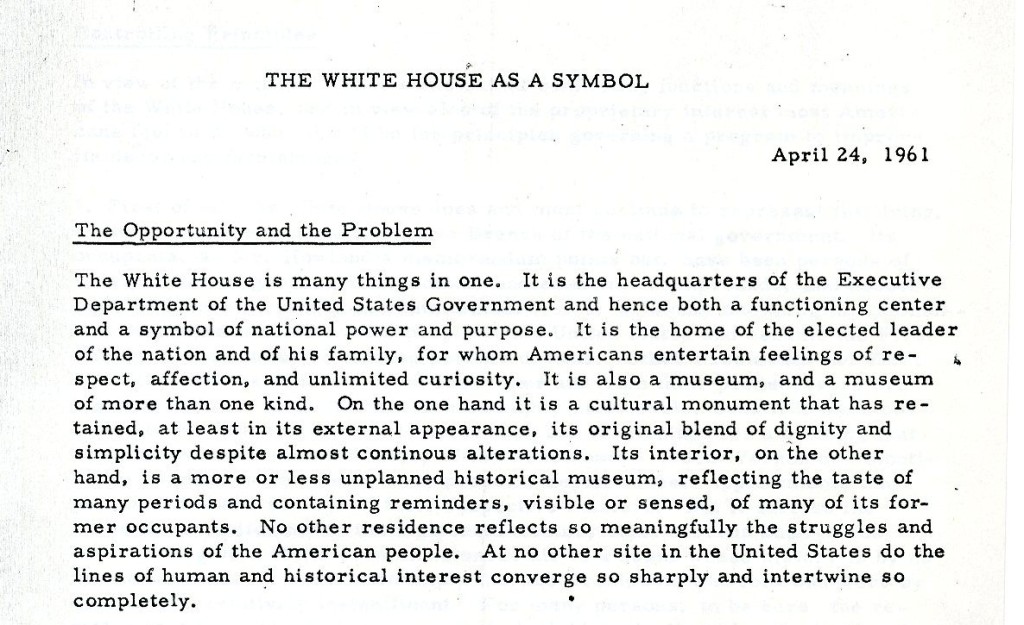
Jackie Kennedy memo: The White House as a Symbol
Source: JFK Library
She also founded the White House Historical Association to publish an official guidebook of the building. Half a million copies of the guidebook sold in 10 months, and the proceeds paid for the restoration of the White House and thus sidestepped using public monies for the project. Sales of The White House: An Historic Guide continue to support the work of the White House Historical Association.
To aid her cause, Congress passed a law in 1961 that declared all objects of historic or artistic interest from the White House collection were the official property of the White House.
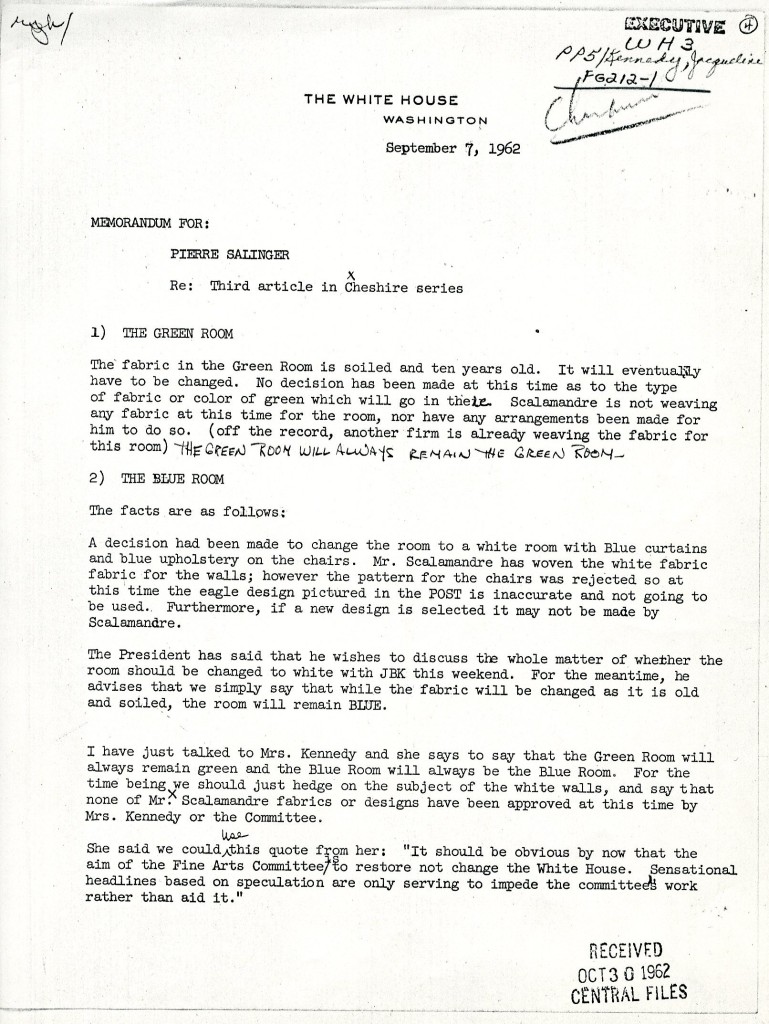
Memo to Mrs. Kennedy re: renovations
Source: JFK Library
Thus empowered, Jackie and the fine arts committee embarked on a search for furniture and artworks that had been part of the White House collection, had belonged to past Presidents, or were appropriate to the period of the various rooms. She persuaded people to donate their historic pieces. She had each piece painstakingly restored. She had one room in the White House set aside for reupholstering the sofas, settees, and wing chairs.
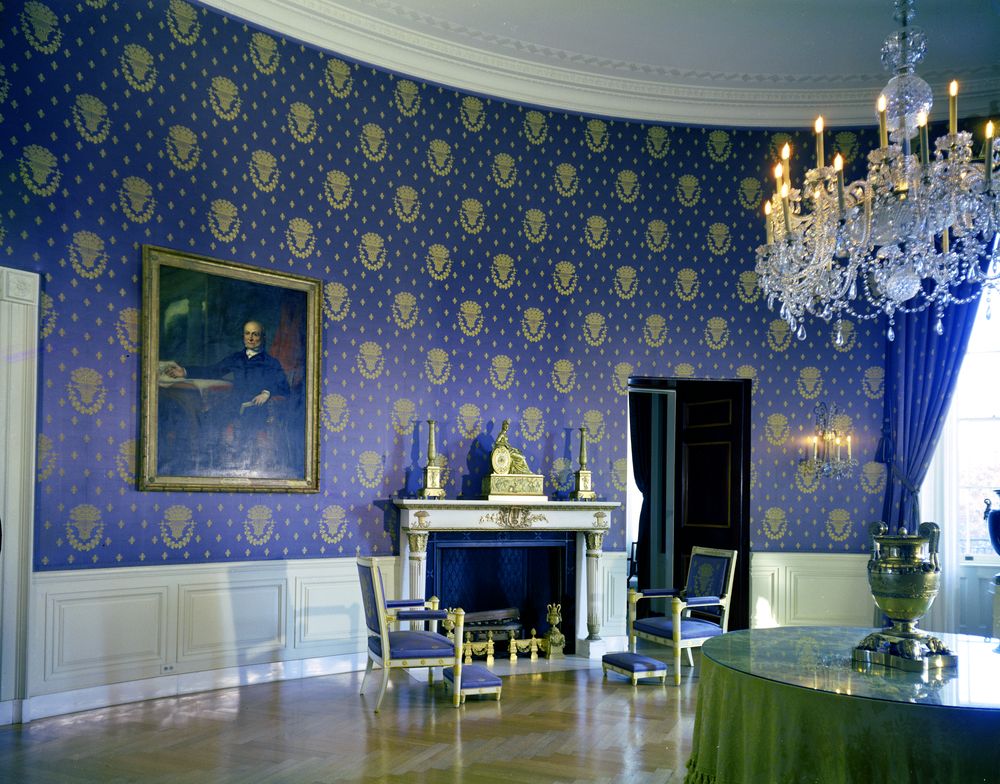
“Before” Blue Room
Source: JFK Library
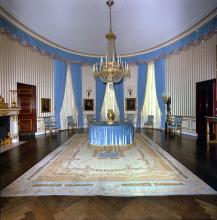
Restored Blue Room
Source: JFK Library

Jacqueline Kennedy receives a silver pitcher in the Diplomatic Room
Source: JFK Library
Starting with the Oval Office, she located the Resolute desk, which Queen Victoria had presented to President Rutherford B. Hayes in 1878. Built from oak timbers of the British Arctic exploration ship HMS Resolute, the desk was at that point on the second floor of the White House, where Jackie found it and had it moved to the Oval Office. It has since been used by every President except George H. W. Bush.

President Kennedy’s desk
Source: JFK Library

The Kennedy children peeking out of the Resolute Desk
Source: JFK Library
On February 14, 1962, Mrs. Kennedy conducted a tour of the White House for CBS television. Fifty-six million people watched the First Lady guide them through the newly restored rooms and encourage them to visit the White House. She received an honorary Emmy for the program.
Jackie also advocated for the preservation of the historic homes on Lafayette Square across the street from the White House and for the restoration of Pennsylvania Avenue. She supported the creation of a national arts and cultural center, which became the Kennedy Center for the Performing Arts in Washington, DC.
Both she and her husband celebrated American arts and letters and encouraged Americans to take pride in their artistic heritage. With her elegance, poise, and fluency in foreign languages, she was a huge asset to John Kennedy and to the nation when they traveled abroad. When she and the President visited Paris in May 1961, she was so warmly received that John Kennedy ruefully remarked, “I do not think it altogether inappropriate to introduce myself….I am the man who accompanied Jacqueline Kennedy to Paris, and I have enjoyed it.”
Source: JFK Library
Jacqueline Kennedy became pregnant again in January 1963. In August, five weeks prior to her due date, she gave birth to Patrick Bouvier Kennedy at Otis Air Force Base, near the Kennedy Compound. The baby was quickly transferred to Children’s Hospital in Boston, and his father went with him while his mother remained hospitalized in Cape Cod. Baby Patrick died two days after his birth. His death profoundly affected both his parents. Jackie was deeply depressed by losing her son, and John, suffering mightily as well, did his best to protect and cherish her throughout the ordeal. Many of their friends remarked that the Kennedys grew closer after they lost baby Patrick.

JFK and Jacqueline land at Love Field in Dallas, TX
Source: JFK Library

JFK’s casket is transferred to Air Force 1
Source: JFK Library

Jackie stands beside LBJ as he takes the Oath of Office
Source: JFK Library
On November 22, 1963, as she rode beside him in an open limousine in Dallas, John Kennedy was shot in the head by an assassin. He died shortly thereafter at Parkland Hospital, about four miles from the parade site. His body was loaded onto Air Force One for the flight back to Washington, and Jacqueline Kennedy, still wearing the pink Chanel suit stained with her husband’s blood, stood next to Lyndon Johnson as he took the Presidential oath of office.
Back in Washington, Jacqueline Kennedy led the planning of John Kennedy’s funeral, designing it after Abraham Lincoln’s. His flag-draped coffin lay in state in the East Room of the White House for 24 hours before a horse-drawn caisson moved it to the Capitol, where it rested in state on the Lincoln catafalque for another 18 hours and a quarter of a million people passed by to pay their respects.
Source: JFK Library

I.M. Pei, architect of the Kennedy Library
Source: JFK Library

Last beam of the JFK Library–topping off ceremony
Source: JFK Library
Then Kennedy’s coffin was again moved by cassion to the White House, and then Jackie and John’s two brothers, Robert and Edward, led the procession to St. Matthew’s Cathedral, where the Kennedys had worshiped and to which they had often walked on Sunday mornings. Despite the Secret Service’s warnings, President Lydon John and First Lady Lady Bird Johnson also marched in the procession behind the Kennedy family members.

View of inaugural address
Source: JFK Library
After the service, Jacqueline and her children watched as the casket was carried down the steps of the cathedral. It was then that Jackie whispered to her son, John Jr., and he saluted his father’s coffin. The mourners traveled by car to Arlington Cemetery, where Jackie lit the eternal flame on John Kennedy’s gravesite and his coffin was lowered into the ground.
Thereafter, Jackie concentrated on building the John F. Kennedy Library in Boston, for which she chose architect I. M. Pei. Shortly thereafter, she bought an apartment in New York and moved there with her children. She supported her brother-in-law Robert F. Kennedy’s run for President in 1968, but his assassination in June of that year shook her to her core. “If they’re killing Kennedys, then my children are targets,” she said. “I want to get out of this country.”
Jackie O.

Bill and Hillary Clinton statement on death of Jacqueline Kennedy Onassis
Source: Clinton White House Website Archives
On October 20, 1968, she married Aristotle Onassis, a wealthy Greek shipping magnate she had long been friends with who she thought could provide her the security she needed. She was roundly condemned for her actions. She and Onassis remained married until his death in Paris on March 15, 1975. After several years of legal maneuvering with Onassis’ family, she received a financial settlement of $26 million.
Jackie then returned to the U.S. and became a consulting editor at Viking Press. She worked there for two years, until The New York Times reported that she had played a role in Viking’s publication of Jeffrey Archer’s novel Shall We Tell the President?, which described the presidency of Ted Kennedy and an assassination plot against him. She then resigned from Viking and went to work for Doubleday. Her list of titles included Dorothy West’s novel The Wedding, the English translation of Naghib Mahfuz’s Cairo Trilogy (with Martha Levin), and the autobiographies of singer-songwriter Carly Simon, ballerina Gelsey Kirkland, and fashion icon Diana Vreeland.
Although she generally stayed out of the public eye, she supported Ted Kennedy’s unsuccessful presidential campaign against Jimmy Carter in 1980 and continued to be involved in cultural and architectural preservation projects. In the 1970s, she led a historic preservation campaign to save Grand Central Terminal from demolition and to renovate the structure, protested a planned skyscraper at Columbus Circle that would have cast large shadows on Central Park in the 1980s, and helped save Olana, the home of Frederic Edwin Church in upstate New York. She received the Fine Arts Federation medal for her efforts in historic preservation in New York City.
In the early 1990s, Onassis supported Bill Clinton’s presidential campaign. She also advised Hillary Clinton about how to raise children in the White House.
In December 1993, Jackie was diagnosed with non-Hodgkin lymphoma. She announced her diagnosis in January 1994, stating that the initial prognosis was good. She began taking chemotherapy and continued to work at Doubleday, but by May, the cancer was pronounced terminal. She left the hospital on May 18, 1994, and died in her sleep the next night at the age of 64, with her children at her side. John F. Kennedy, Jr., announced his mother’s death the next morning, she had been “surrounded by her friends and her family and her books, and the people and the things that she loved… “she did it in her very own way, and on her own terms, and we all feel lucky for that.”
On May 23, 1994, her funeral Mass was held at the Church of St. Ignatius Loyola, where she was baptized in 1929 and confirmed as a teenager. She was interred at Arlington National Cemetery in Arlington, Virginia, alongside President Kennedy, their son Patrick, and their stillborn daughter Arabella. President Bill Clinton delivered a eulogy at her graveside service.





